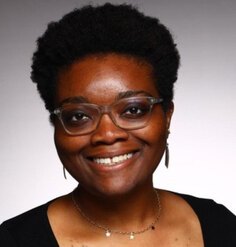5 Questions with Signe Nielsen
September 29. 2014
Signe Nielsen, FASLA is a founding principal at Mathews Nielsen Landscape Architects. She has led more than 400 projects, nationally and globally, winning dozens of design awards. She is the co-author of several books on sustainable and green design for the NYC Department of Design and Construction, has taught at Pratt Institute for more than two decades, and serves as president of the Public Design Commission of the City of New York.
What are you drawing inspiration from right now?
I have always drawn inspiration from observing people: people using a variety of spatial types, people of different cultures responding to their environments using vernacular methods of adaptation, and people creating artistic expressions of their world view. I also include observing people using spaces I have designed. Part of my interest lies in understanding “nature versus nurture”, if you will, between how cultural, physical, or environmental forces influence the design of spaces and what people do in those spaces. I am equally interested in the universal qualities of people as social animals who seek comfort, companionship, and pleasure derived from interacting with collective space.
From these observations, which I routinely seek out through travel at least three times a year (for reasons other than work-related travel), I not only remain somewhat current with new trends in design including materials, forms, and approaches to challenging sites, but more importantly, I gain first-hand impressions. I find it misleading to simply look at images of recently built projects. Too much is left out of the photos and the reader is left with only a part of the story (for better or worse). Seeing a project in the context of its larger site, cultural history, and other public spaces, I feel more confident in understanding if or how a project is compelling. In terms of observing spaces I have designed, I am frequently delighted to see people engaging in activities I never imagined.
In the end, I consider myself a designer of places for people that must also respond, heal or in some way contribute to larger environmental benefit. Therefore this synergy of people, environment, and space and the resulting built world are an endless source of inspiration.
What potential for sustainability most excites you on one of your current projects?
We are currently developing a vision plan for the East River Esplanade in Manhattan. After listening to the litany of issues that folks want fixed, I realize that any ideas we put forth need to provide multiple benefits. For example, if we just try to make the esplanade quieter by mitigating traffic noise, we are potentially making the linear corridor unsafe by throwing up a wall. If, on the other hand, we think about the future vulnerability of the road from sea level rise and the flood impacts to low-lying housing, we can formulate approaches that not only improve the experiential qualities of the esplanade but have a broader capacity to create long-term resiliency and protection.
We have gained a remarkable amount of traction from this approach. At the outset, the project was viewed as a cosmetic design exercise engaging only nearby residents. Now, however, elected officials, agency leaders, and policy-makers are taking note and beginning to advocate, and raise funds for, our more holistic approach. In essence, we have posited that any work done along the esplanade, given the enormous financial investment required, must solve multiple problems. We can, therefore, combine notions of soft shorelines with a widened esplanade along with land bridges and “hardened” berms that will simultaneously dramatically increase the amount of waterfront public space, protect a vital evacuation route and upland residential buildings from the damaging effects of climate change. To my mind, that is sustainability at its best.
What do you need to know, but you don't know right now?
I find that I often don’t know what I don’t know until I am confronted with problems that I seek to solve using a new or adapted strategy. Then I realize all the things I don’t know about how to apply, create or manipulate techniques to a site-specific condition. As an example, we are transforming a wharf and parking lot into an 8-acre park. We want to soften the shoreline, take the electrical load “off the grid” and create a protective land form along the park’s upland edge. What I don’t know:
- How low or high should the top of the riprap or wave-attenuators be to prevent scouring from tidal action and how can this be designed for a 50-year life in light of anticipated sea level rise? Should these float?
- How can I demonstrate to city agencies that solar power to operate park lighting and the comfort station will be as effective and reliable as hard-wired power? Is the problem really just battery life?
- What can be learned from hurricane Sandy flooding in terms of soil composition and plant survival and how can I do better than what I believe I see are the pitfalls? Have we misunderstood “salt tolerance” in plant species?
Some of the answers to these unknowns are my own ignorance, some are the result of risk-averse clients who only know one way to do things, and some are the result of a specific event that may or may not have greater ramifications. So each type of unknown requires different approaches, research, and exploration. Some of this we can do on our own, but many of these need hard evidence of collective experience, particularly to persuade public entities that their funding is being used sensibly and for the long haul.
What advice would you give to emerging leaders in the profession?
Patience and advocacy. Most of the projects of which I am most proud and which have had a significantly positive impact on their communities have required years, even decades, to realize. Throughout those years from initial conceptual plans to physical fruition, leaders may change, policies may evolve and funding may come or go. Only if your idea is powerful, will you be able to sustain the energy to keep advocating for its realization.
What challenge would you give to emerging leaders in the profession?
There are no shortcuts. Design in the broadest sense of the word is hard work that demands vigilance. Even for those people who consider themselves facile with developing initial design concepts need to continue to exercise rigor throughout development, documentation, and construction of those concepts. All too frequently during a project’s design life, many people want to chip away at the concept. I believe it is essential to know what to fight for and where compromise can be effectively absorbed without jeopardizing the value and benefit that your project has to offer. Obviously, I am addressing these remarks to practitioners as opposed to educators or writers, who play an equally important role in elevating the discourse and research related to landscape architecture practice.
Mathews Nielsen is an award-winning landscape architectural practice providing comprehensive planning and site design services throughout the United States for 20 years. The founding principals of the firm, Kim Mathews and Signe Nielsen, together with Managing Principal Rob DeMarco and Principal Molly Bourne, guide a skilled, professional staff of 24 landscape architects, urban designers and project managers. Projects include master plans for educational and cultural institutions; site plans for residential communities and commercial centers; landscape designs for museums, performing art centers, and corporate facilities; and full design services for waterfronts, parks, and transportation corridors.
Any opinions expressed in this interview belong solely to the author. Their inclusion in this article does not reflect endorsement by LAF.











